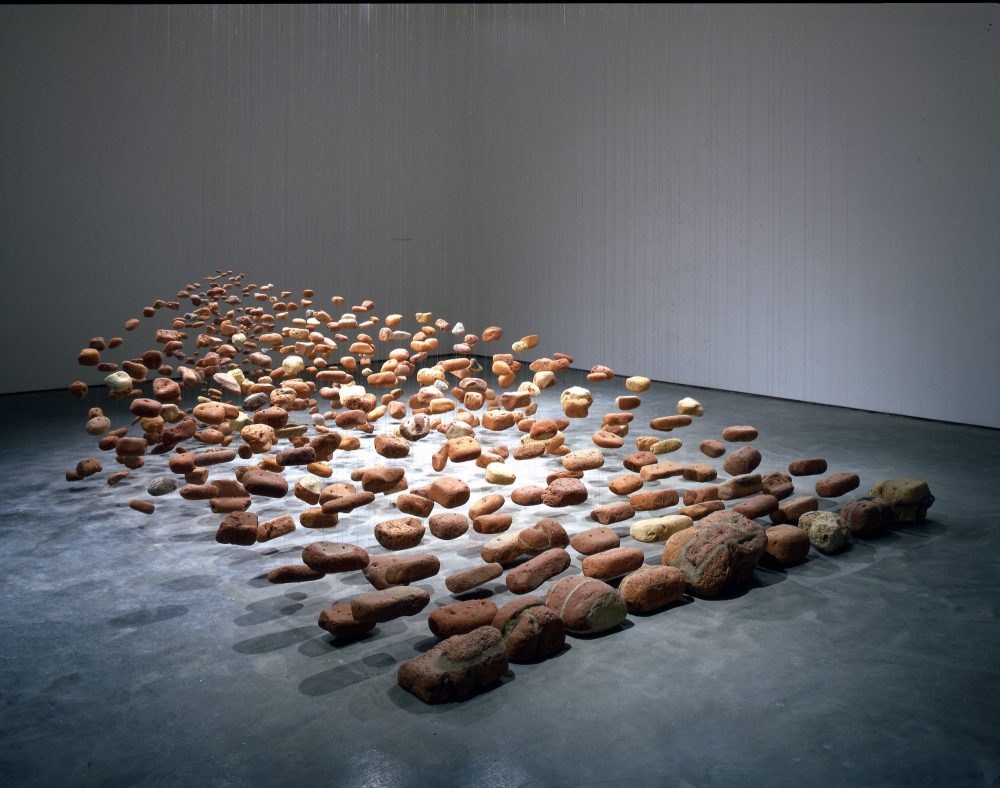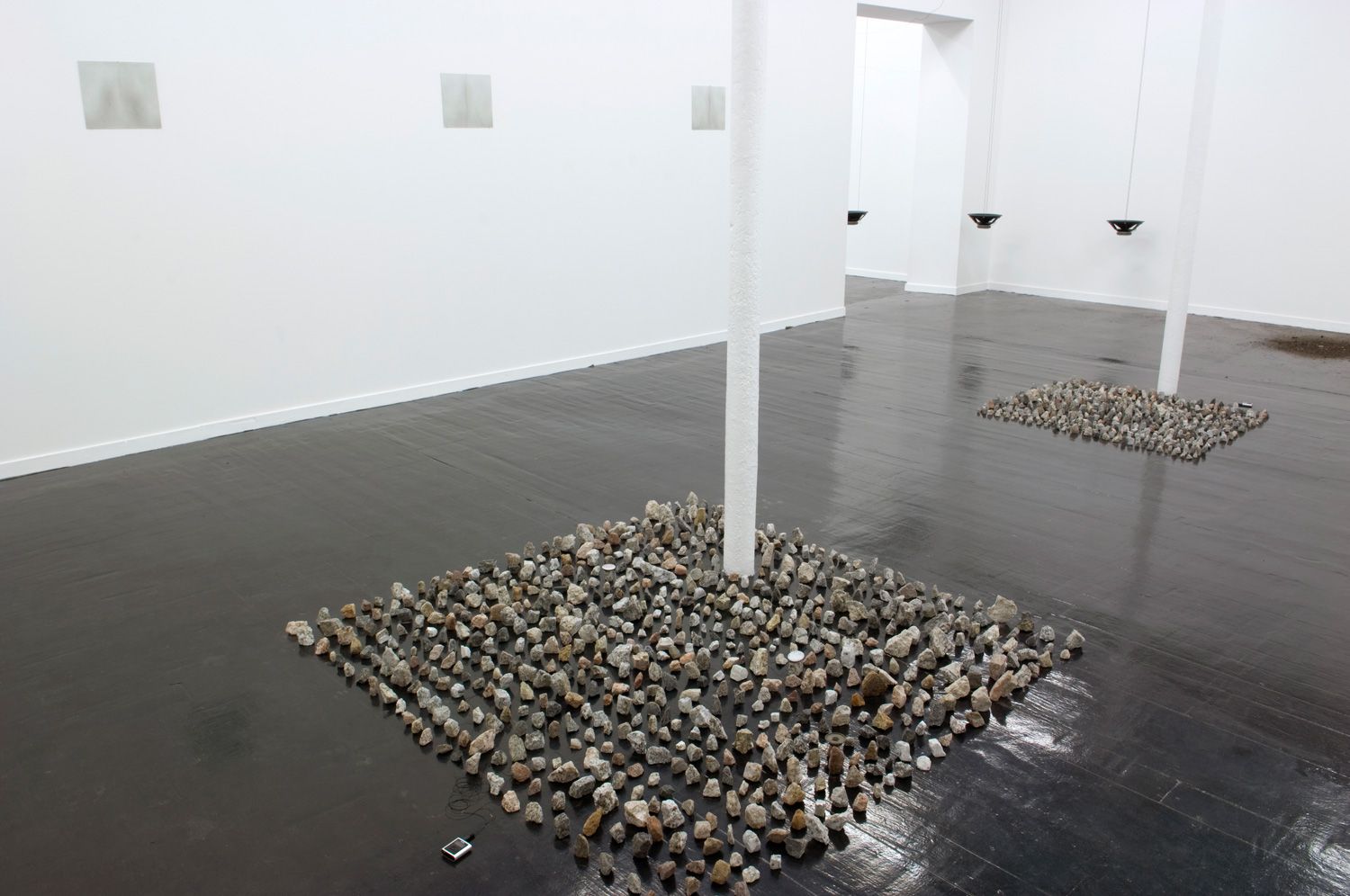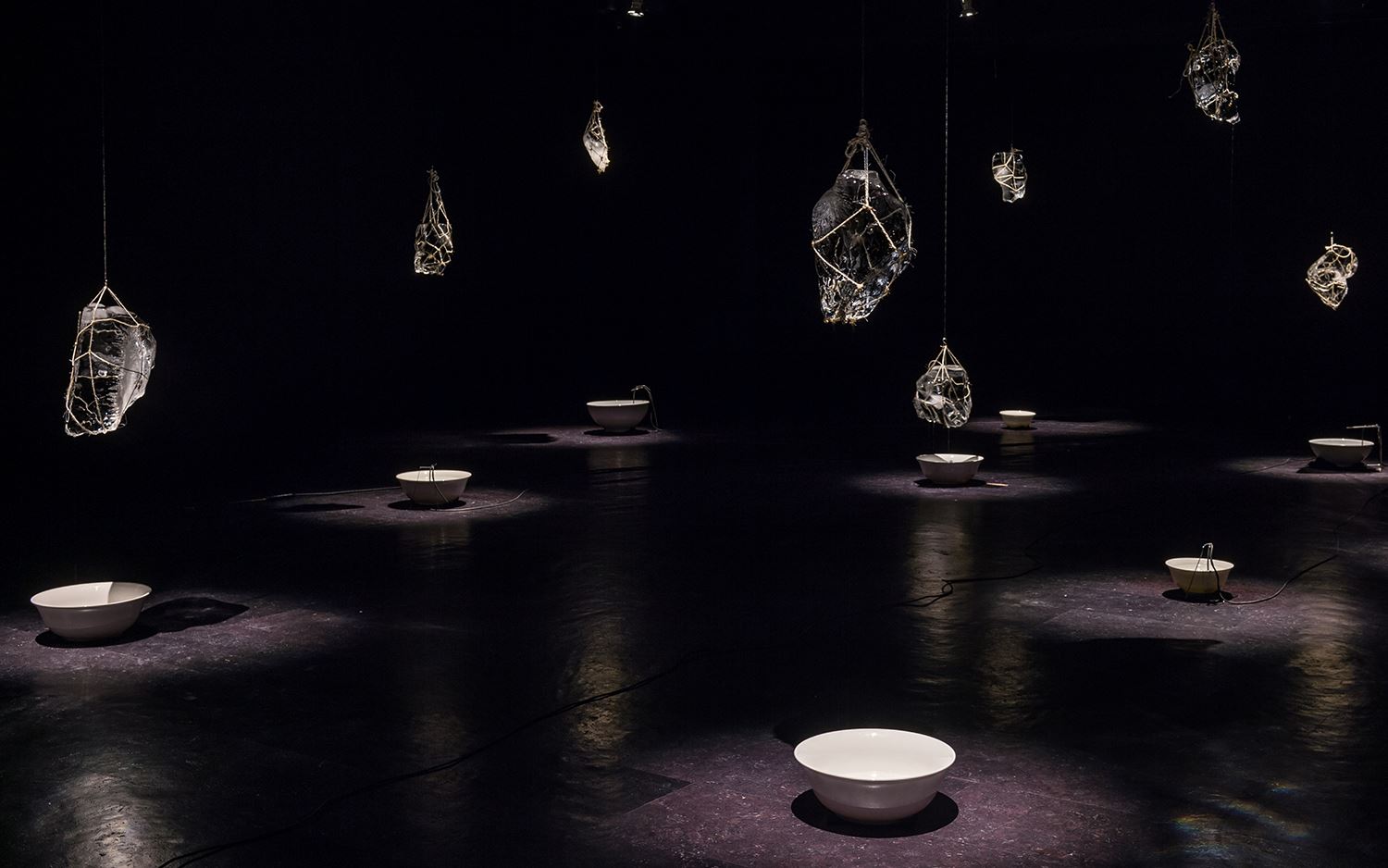Continental Drift
Performative and interactive installation in which participants tell and discover each other’s secrets through their physical contact with rocks.
produced by: Maite de Orbe
Introduction
“Continental Drift” is a performative and interactive installation in which participants interact with two rocks. Grounded in a scene from “In The Mood For Love” where the main character whispers an untold secret to a rock, it explores the ideas of belonging to the earth as well as the possibility of creating traditions and connections between humans and non humans by means of technology. Through capacitive sensing, a human touch triggers one rock to record the participants secret and the other to archive and play the secrets. Ideally each rock would inhabit its own room. In the first one, the audience walk into a soundscape of secrets told by previous participants. The atmosphere of the room is the rocks archive. When the participant touches this rock they hear the recorded secret from the previous participant. This touch also releases the secret from the rock and into the atmospheric soundscape along with the previous ones. The participant swims around an environment of revealed secrets. The room of the second rock is silent. Here the participant can choose to record their own secret by touching and speaking to the rock. Their touch triggers the hidden microphone to record their secret. It is sent to a buffer and is stored in the first rock for the next participant to listen and then release it into the archive.
Concept and background research
The title, "Continental Drift" comes from the scientific term that explains the similarities in composition of rocks that might be in opposite shores of an ocean. Described by geologist Alfred Wegener, he proposed that the continents were once united into a single supercontinent named Pangaea, meaning 'all earth' in ancient Greek. He suggested that Pangaea broke up long ago and that the continents then moved to their current positions. He called his hypothesis continental drift. One of the fundaments of this hypothesis says that identical rocks, of the same type and age, are found on both sides of the Atlantic Ocean. Wegener said the rocks had formed side-by-side and that the land had since moved apart. This piece has used this principle, along with the final scene of the film "Fa yeung nin wa (In the Mood for Love)" (2000) by Wong Kar-Wai in which one of the main characters recovers an ancient tradition of whispering a never told secret into a rock, leaving it there forever. The key idea to this installation is the creation of a connection between participants, which aligns with the geology theory by proposing that two people far away in the world can and will have relatable secrets and life experiences. Based on the analysis “The disappearance of rituals” (2020) by South Korean philosopher Byung Chul Han, technology has collaborated into the disappearance of community acts. By making them obsolete, communities originally built around them have disappeared. By digitalizing a ritual, this installation altogether reflects on the idea of belonging and origins, as well the creation of rituals through technology.
Technical / Self-evaluation
The following program creates a soundscape out of recordings from the audience. Connecting an Arduino TouchBoard to trigger the physical installation, two rocks serve as trigger buttons to recording and playing of the secret. One of them, connected to an external microphone, will trigger the recording of a secret that the audience, individually and one by one, is encouraged to whisper. This recording is then stored and will be played when the second rock is touched. Additionally, when the second rock is played, a trigger bang is sent from Openframeworks to Max Msp through OSC that will activate the recording of the secret being played along with ambient sound. This Max recording is then fed into a loop that, altered by filters, will collaborate to a general immersive ambient sound that aims to embrace the audience.
Given the difficult circumstances under which this piece has been thought and constructed, I am pleased with the outcome of this submission and believe that a proper installation would be successful and exciting for the spectator. Nevertheless, I believe that the concept is more developed than the technological part and would like to keep on working on this part to achieve the future development goals I proposed above.
Future development
For further development I would like to firstly install this piece in a bigger physical space in which the two rocks would be in the two different rooms. Light and environment would be adapted to generate a bigger sense of intimacy (dim light and dark walls). Additionally I would like to play with a multichannel sound outcome for the soundscape of memories in order to create a really immersive environment that embraces the participants.
Another thing I would like to develop is to create something physical that the spectator would be able to take home with them as a result from their interaction with the piece. This would encourage them even more to leave their own secret recording, as well as materializing an experience which can act as a later reminder of the moment lived. Something that could work for this would be the use of a thermal printer printing the sound waves of the secret.
Lastly, I would like to explore the different materials rocks are made and delve deeper into their capacity to pass on electricity. It would be interesting to study their composition and to create something more adapted to this.
References
This piece has used the following as source code:
""" Title:
Author:
Date: <10 Dic 2016>
Availability:
""" Title:
Author:
Date: <15 May 2015>
Availability: <https://github.com/elaye/ofxTouchBoard/tree/master/example_touchEvent/src> """
""" Title:
Author:
Date: <2010>
Availability: <https://masteringof.wordpress.com/examples/sounds/> """
ADDONS USED:
ofxOSC - Available at: https://github.com/hideyukisaito/ofxOsc
ofxTouchBoard - Available at: https://github.com/elaye/ofxTouchBoard
The images below are from artworks by Cornelia Parker, Rolf Julius, and Pinuccio Sciola




































































